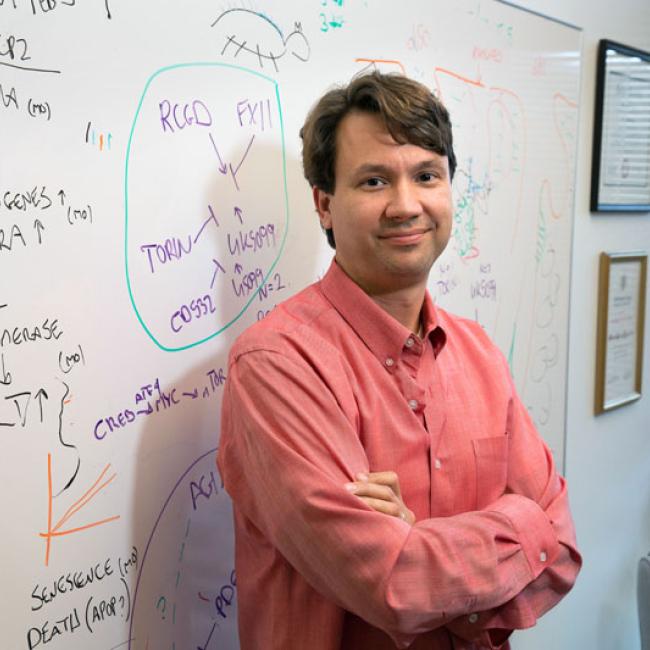UCLA stem cell researchers identify a cell of origin for squamous cell carcinoma
Squamous cell cancers, which can occur in multiple organs in the body, can originate from hair follicle stem cells, a finding that could result in new strategies to treat and potentially prevent the disease, according to a study by researchers with the Eli and Edythe Broad Center of Regenerative Medicine and Stem Cell Research at UCLA.
Researchers also found that the progeny of those cells, although just a few divisions away from the mother hair follicle stem cells, were not capable of forming squamous cell cancers. Further studying why those progeny, called transit amplifying cells, can’t develop cancer could provide vital clues to how squamous cell cancers originate, said William Lowry, an assistant professor of molecular, cell and developmental biology in Life Sciences and senior author of the study.
The study, conducted in mouse models, appears April 18, 2011 in the early online edition of the peer-reviewed journal the Proceedings of the National Academy of Sciences (PNAS).
It had been suggested in the literature that squamous cell cancers could arise from the hair follicle, but it was not clear what cell type within the follicle was responsible. This is the first time two distinct cell types in the skin have been compared and contrasted for their ability to develop squamous cell cancers, said Lowry, who also is a researcher with UCLA’s Jonsson Comprehensive Cancer Center.
"It was surprising that the progeny of these stem cells, which are developmentally more restricted, could not develop cancers when the mother stem cells could,” said Lowry. “There is something fundamentally different between the two, and it’s important that we figure out why one type of cell was able to develop cancer and the other was not. The insights we gain will tell us how these cancers arise in the first place, and could provide us with a wealth of novel targets we could go after to prevent the cancer before it starts.”
A type of non-melanoma skin cancer, these cancers form in squamous cells, thin, flat cells found on the surface of the skin, the lining of the hollow organs of the body and the passages of the respiratory and digestive tracts. Squamous cell cancers occur in the skin, lips, mouth, esophagus, bladder, prostate, lungs, vagina, anus and cervix. Despite the common name, these cancers are unique malignancies with significant differences in manifestation and prognosis.
In this study, Lowry and his team sought to determine which cells of the epidermis, or skin, could give rise to squamous cell cancer. They wanted to find out if skin stem cells had properties than made them more prone to develop tumors than non-stem cells, said Andrew White, a post-doctoral fellow in Lowry’s lab and first author of the study.
“Adult stem cells are long-lived and can acquire mutations that can cause cancer, but they also have intrinsic properties for self-renewal that are similar to cancer that could make them more tumor prone,” White said.
Lowry and his team delivered genetic hits – adding an oncogene that is known to cause cancer and removing a tumor suppressor gene - to the hair follicle stem cells and the transit amplifying cells in two groups of mice and waited to see which developed cancer. Only the mice that received the genetic hits in the hair follicle stem cell population developed squamous cell cancer.
Going forward, White will molecularly profile the hair follicle stem cells and the transit amplifying cells to determine what string of biologic events occur when the cancer-causing genes are delivered. The differences between the two will be illuminating, Lowry said.
“We hope that this will lead to much more specific therapies that target cancer initiation rather than treating the disease once it’s established,” Lowry said. “If we’re lucky, a drug may already exist that will hit a target we identify.”
The four-year study was funded by a training grant from the California Institute for Regenerative Medicine, National Institutes of Health, American Cancer Society, the University of California Cancer Research Coordinating Committee, the Maria Rowena Ross Chair in Cell Biology and Biochemistry and the Jonsson Cancer Center Foundation.
A Belgium-based team also came to similar conclusions using slightly different methods, confirming the UCLA results. That study is published alongside Lowry’s in PNAS.
